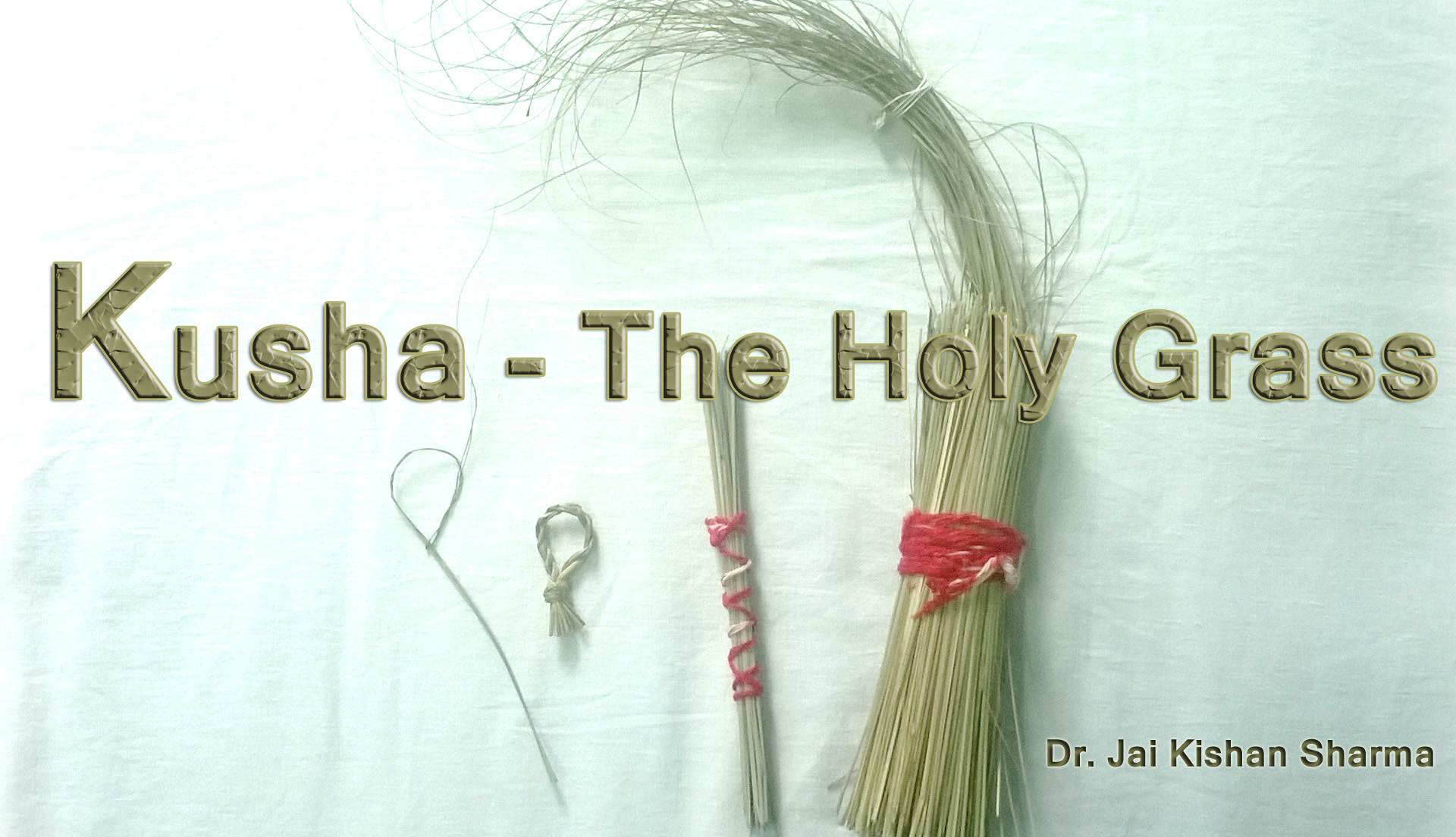
| |
|
Kusha is the most essential item of Puja paraphernalia for Hindus. It is also known as Darbham and Doorva.
In English, it is termed Koin while its botanical name is Eragrostis
cynosuroides. It is widely used in all religious ceremonies and rituals.
This grass grows naturally on the wet banks of paddy fields. The growing roots of this grass forms a dense mat which bind the soil of banks and prevents soil erosion. It cannot be planted and grown everywhere. The edges of the leaf blades are very sharp. It might hurt your skin with a cut if not handled cautiously. To make it handy for religious occasions, I tried to cultivate it many times in my kitchen garden but failed. It cannot be harvested on any day. According to Hindu calendar, Bhadra Amvasya is the date for cutting and collecting Kusha. This Amvasya is known as Kushotpatni Amavasya. In Kashmiri, it is commonly called Dharb Mavas. This year, Bhadra Amavasya falls on 25th of August. Before exodus, Kashmiri Pandits used to cut Kusha while reciting a particular hymn. I remember the hymn my late father used to recite, “Virinchen Sahotpann Parmeshthinisargja; Nad Sarwani Papani Darbh Swasti Karo Bhava”. 
Kusha is believed to be pure, germ-free and has the ability to absorb the highly toxic radioactive atoms from the environment. May be this is the reason that many items like Pavither, Upyam, Vishthur, Mounji, Darbhi Hur etc. are used while performing different types of religious rituals and ceremonies by Hindus. Pavither: This is an essential requisite for a person performing religious rituals. It is a ring made of Kusha called Kusha Angriyem, which is worn on the right hand ring finger known (Anamika). 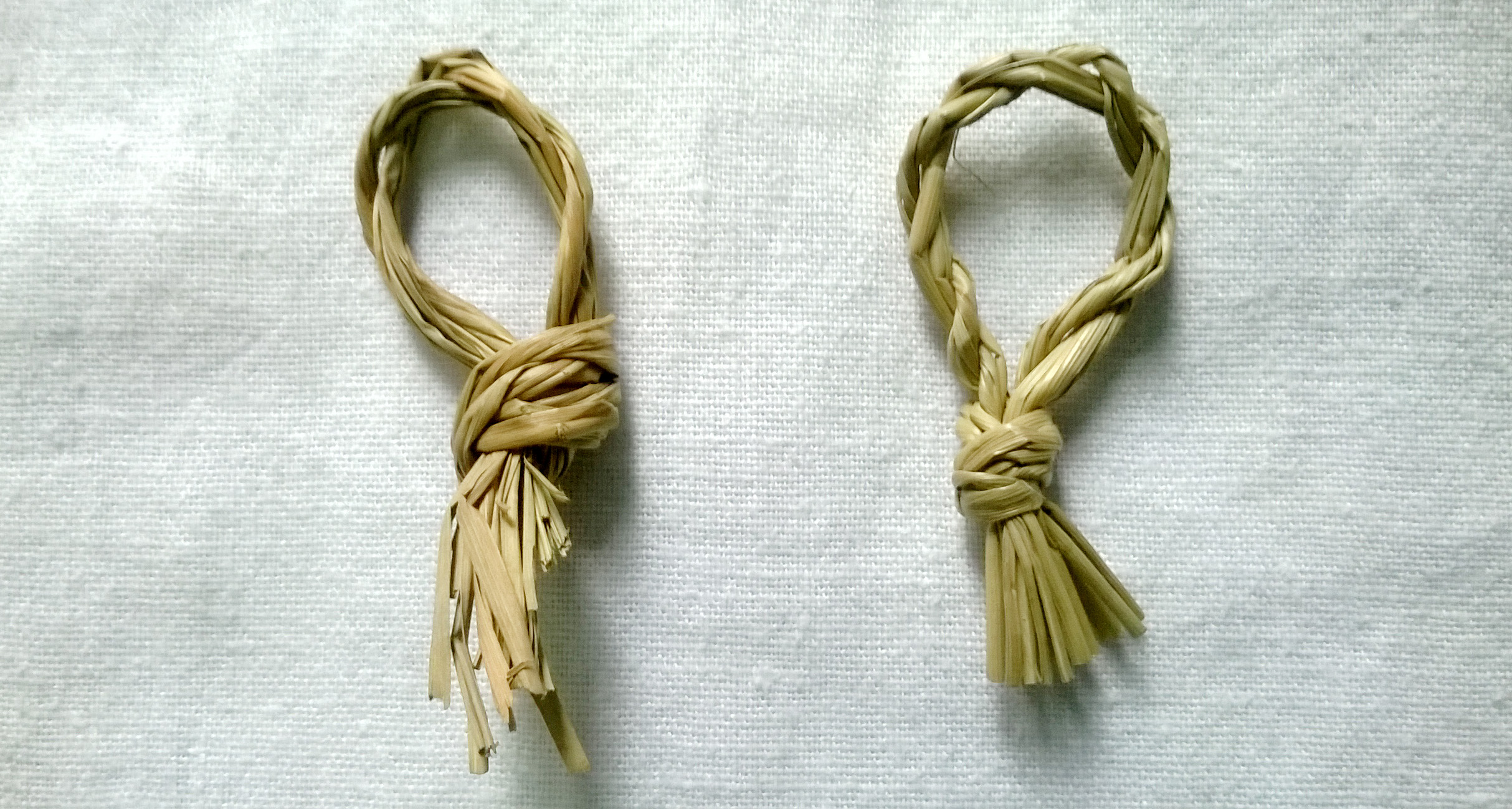
To make a Pavither, dried Kusha is made wet so that it can be bent and a loop is made which can be slipped into the finger. Upyam: It is a small bunch of pruned holy Kusha which is placed on right ear by the performer while performing Havan/Kriya. 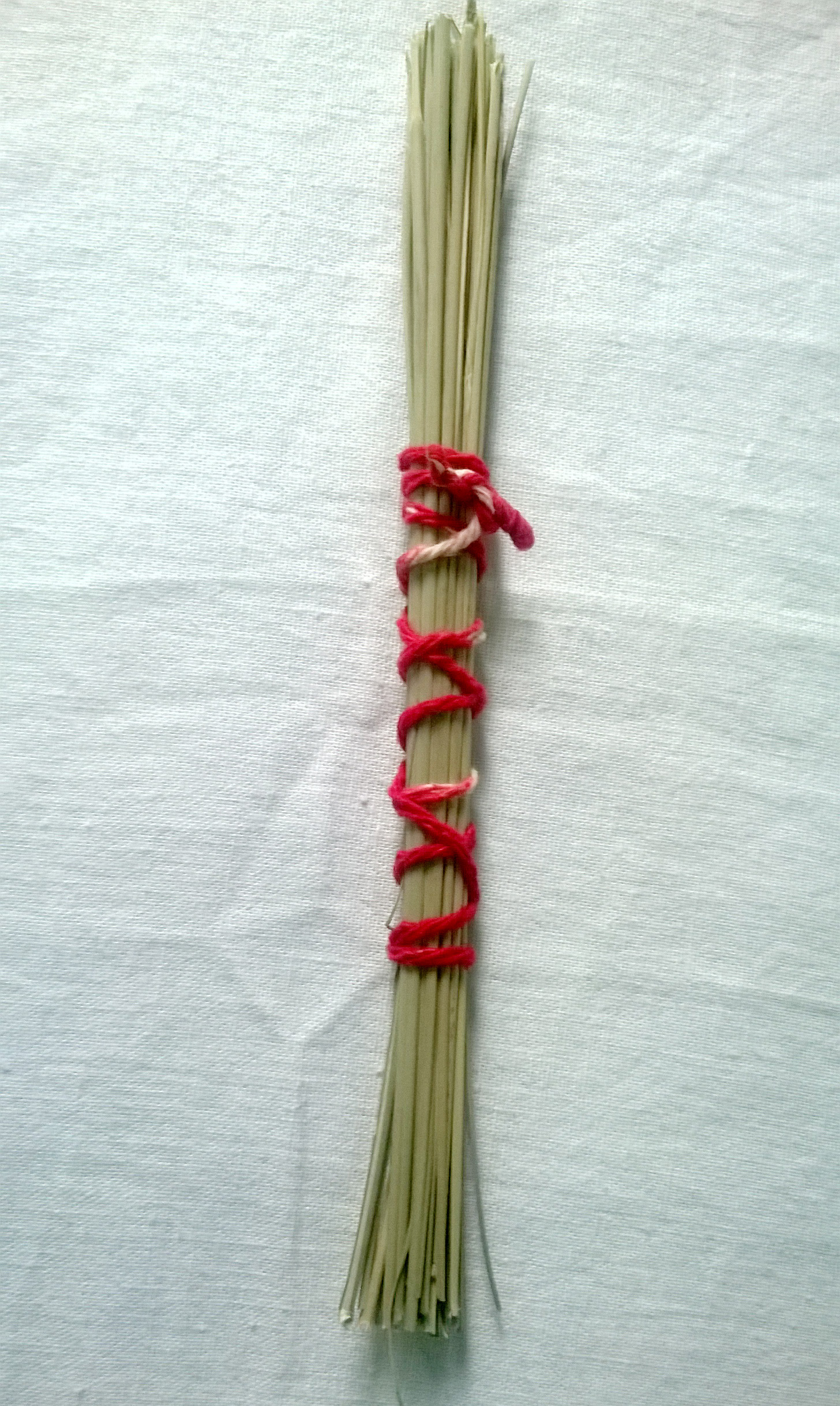
Vishthur: It is made of one or two blades of Kusha but the grass should not be without its tip portion.
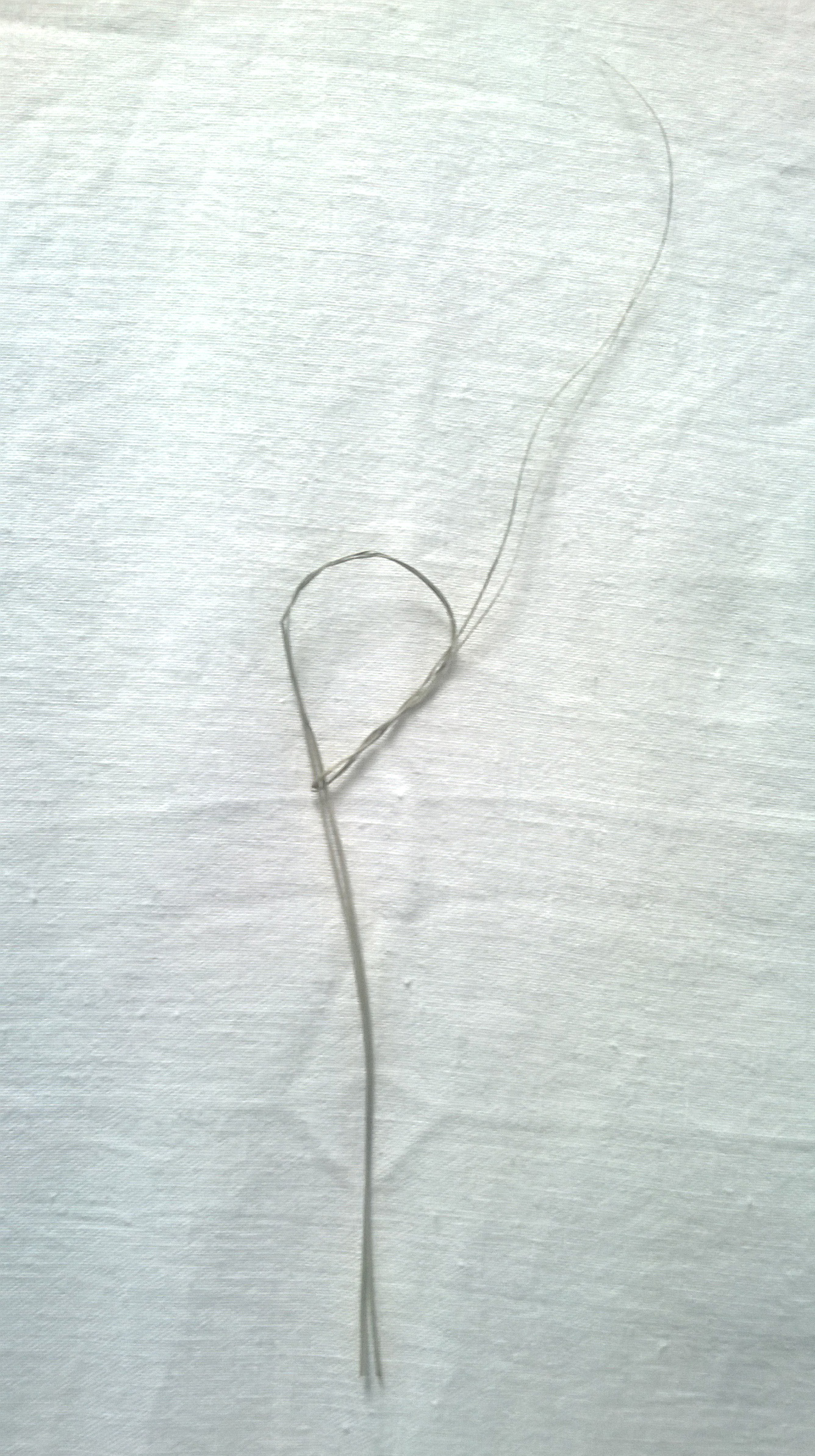
Vishthur is used for Tarpan, sprinkling the sanctified water for Jeevadan and to sanctify every nook and corner of the place where the religious function is going to be held. ‘Pavitrarthey Imey Kusha’ (meaning these leaf blades of Kusha are for sanctification) is recited while sanctifying.
Mekhla: Commonly called as Darbi Ruz in Kashmiri, Mekhla means a belt or a string of holy Kusha which is tied around the waist of Mekhli Maharaz on his Yagneopavit ceremony and to a girl on Devgon and wedding day. 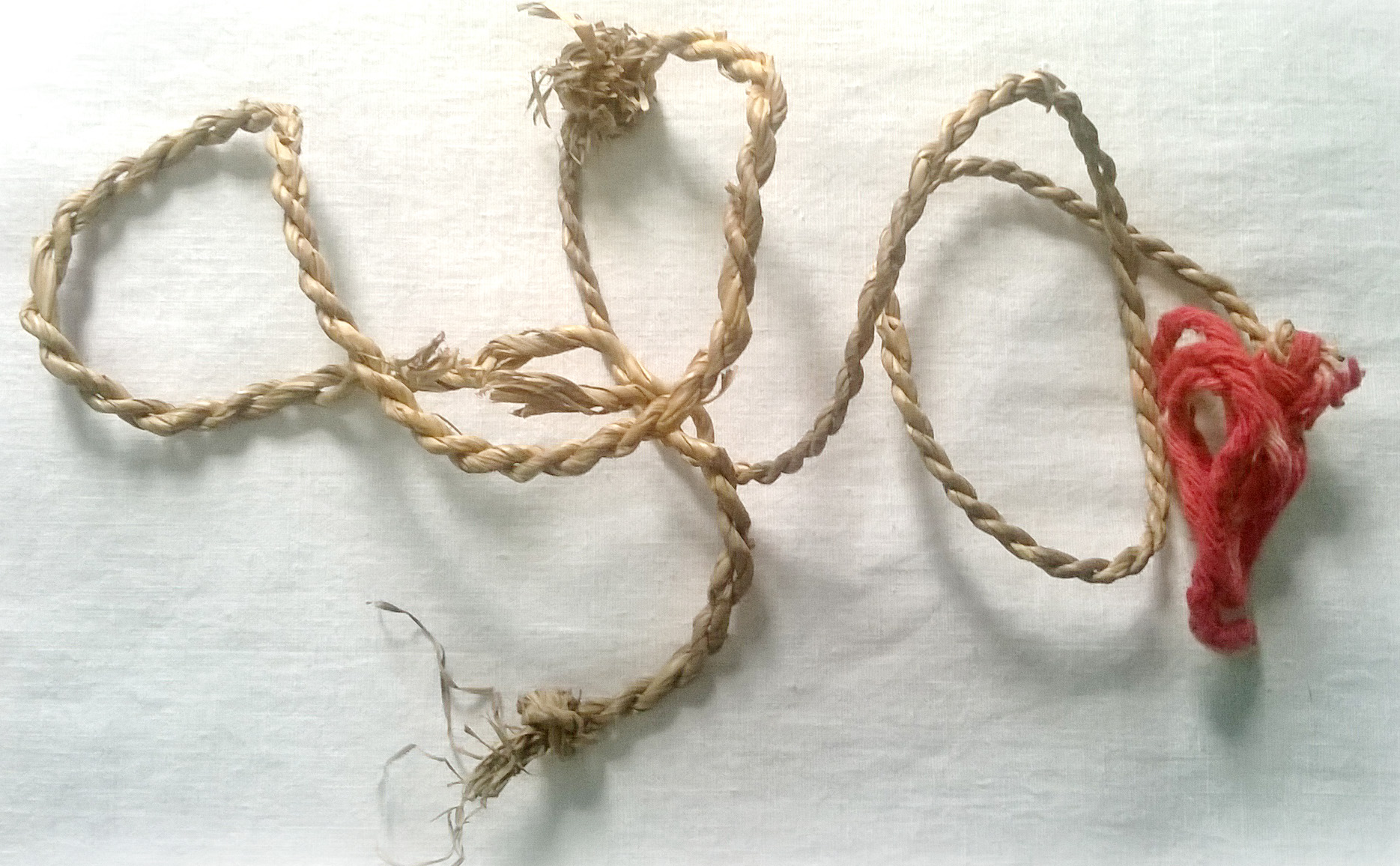
The string of Kusha is also used for hanging Mrigchala (Mrigazal in Kashmiri) around the neck and arm on Yagneopavit ceremony.
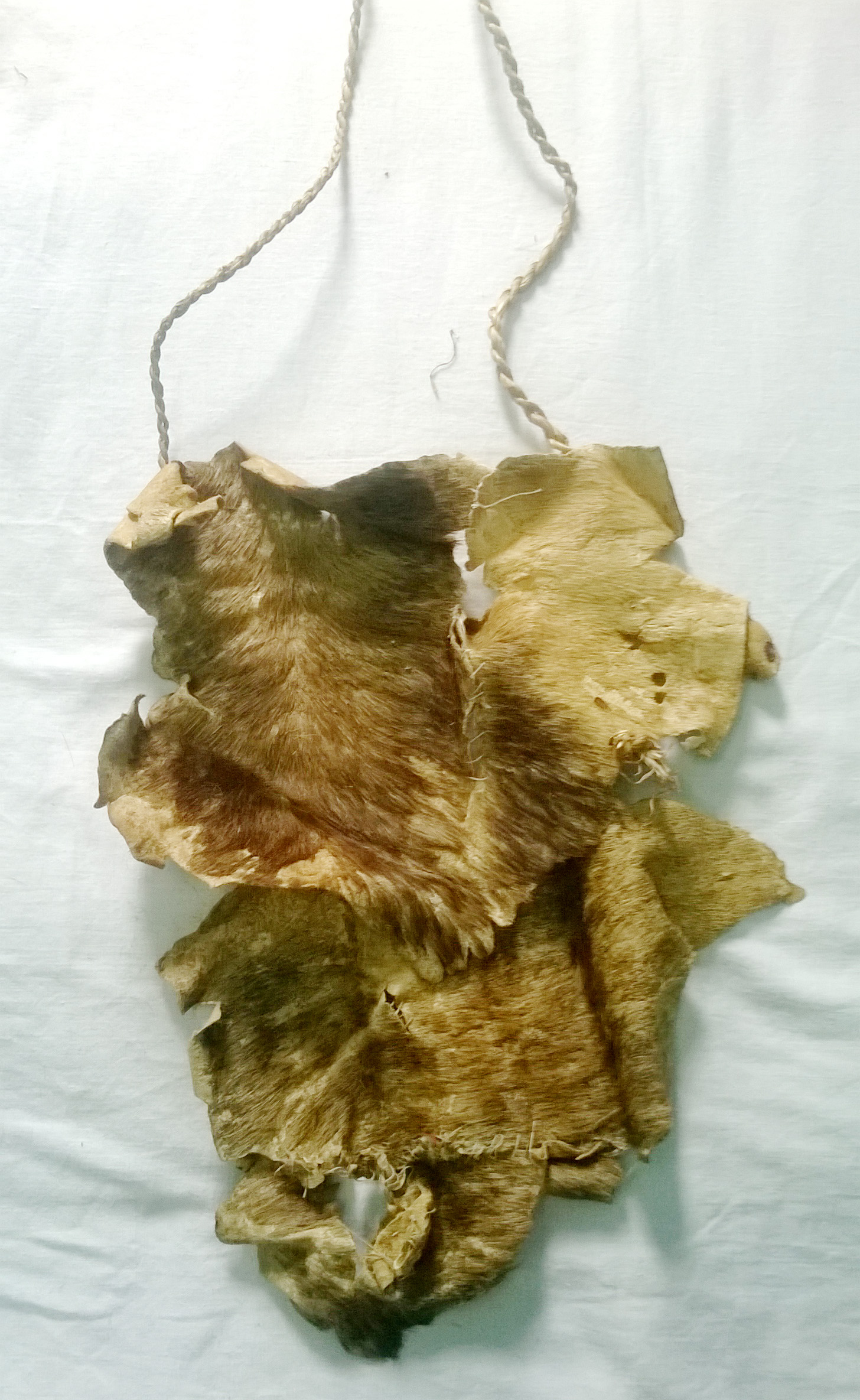
Darbhi Hur: A handful of pruned holy Kusha bundled together is called Darbhi Hur in Kashmiri Hindu tradition. It is used as Chamar, especially on the festival of Hyerath and birthday.

The
bunch is held in the right hand placing the tip point towards the
invoked deity and waved right to left repeatedly while reciting Atibheeshan Katubhashan, Mahimna Stotra, Jai Narayan or any other hymn. The leaf blades of this grass are spread all over the four sides of the Agni-kund. It is also used as Aasan for invoked deities on all religious functions.
During Pitri Kriya or Vaishvavidhi on Shivratri festival or any other ritual, sacred offerings (Annkan) to sages, deceased ones and ancestors (up to the seven generation) are placed on Darbh spread in “L” shape. The holy Kusha is said to possess magnetic quality and is believed to attract the dead to accept the offerings. Kusha is also kept in food items, especially cooked ones, before the solar or lunar eclipse starts, to protect them from harmful ultra-violet radiation. A Hindu woman cannot perform any religious ritual during her menstrual period. That is why keeping a leaf blade of Kusha in her hair lock was an indication that she cannot perform any religious rite for a certain period. In old times, a Kashmiri Hindu woman had to deliver her child on the bed with Kusha all over. Immediately after death, mortal remains of a Hindu are kept on ground with Kusha all over. In the words of Walter R. Lawrence, “The Darbhi grass forms the bed on which the Kashmiri Hindu is ushered into the world and on which he dies”. | |
Friday, October 17, 2014
Kusha The Holy Grass
Subscribe to:
Post Comments (Atom)
No comments:
Post a Comment